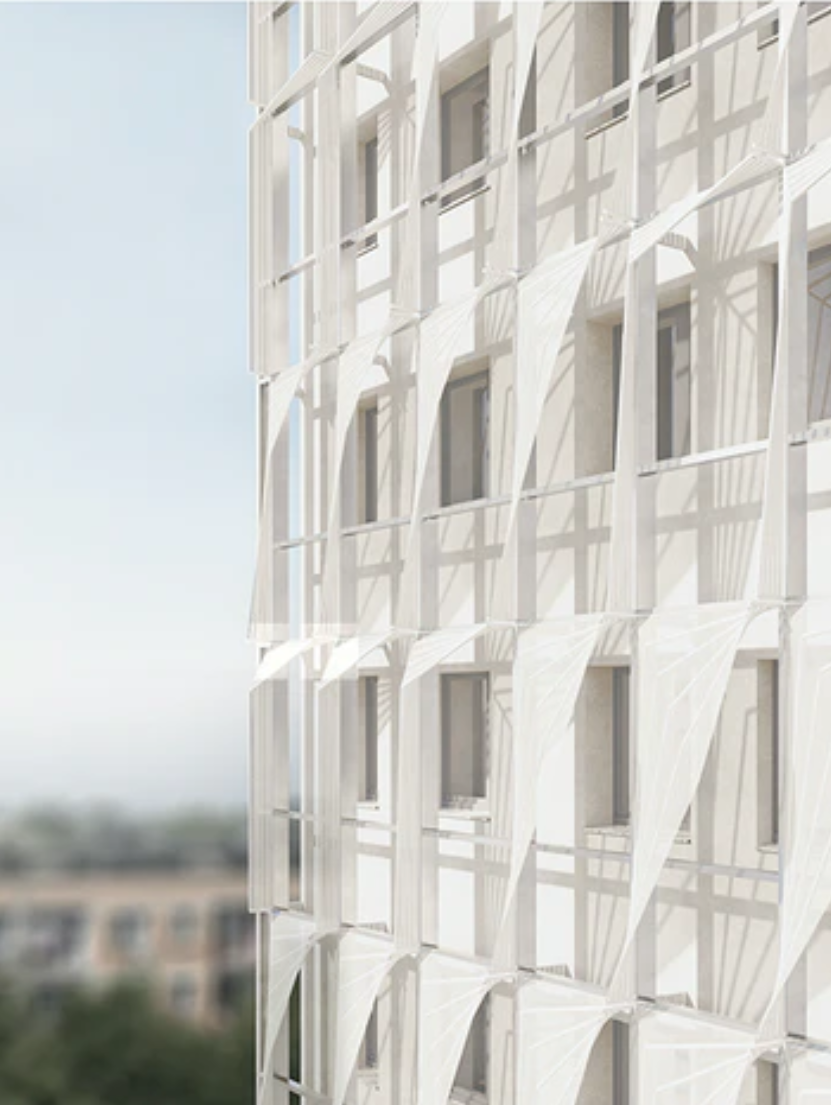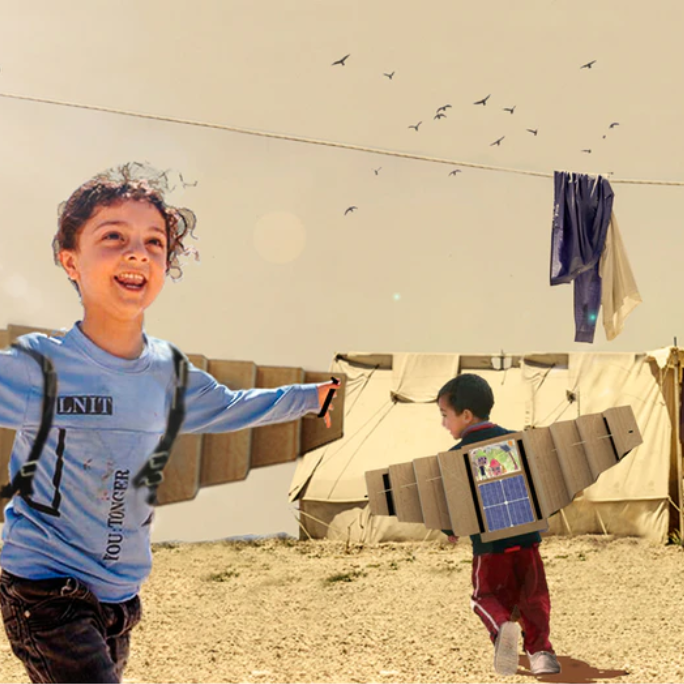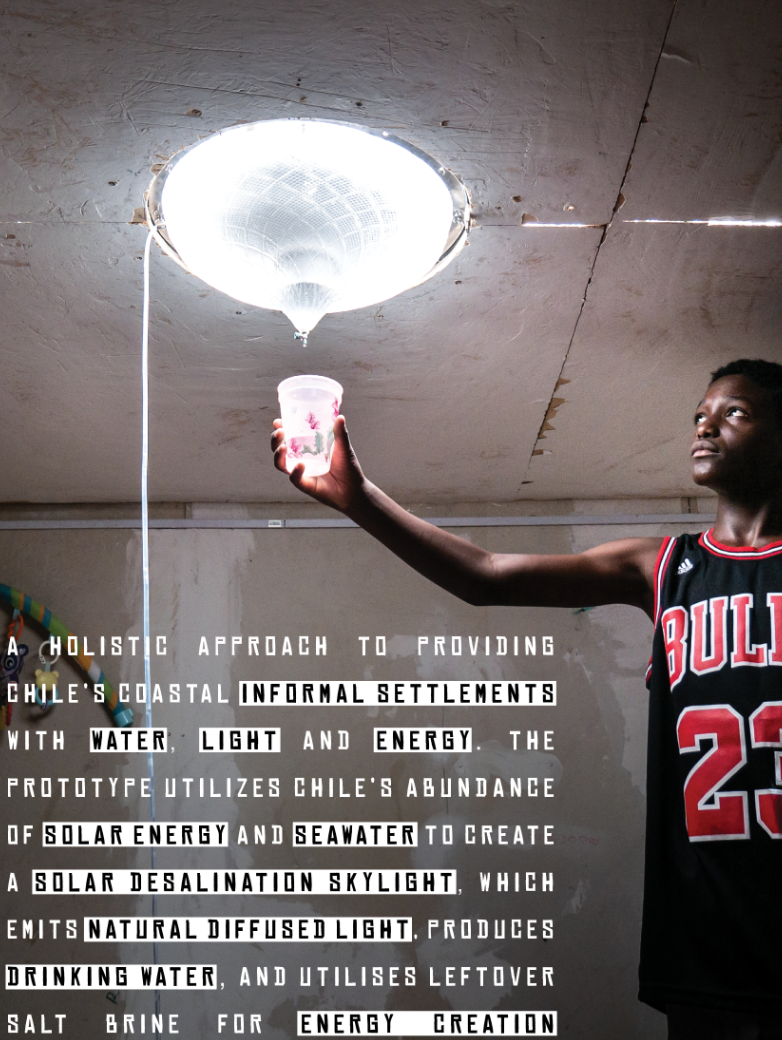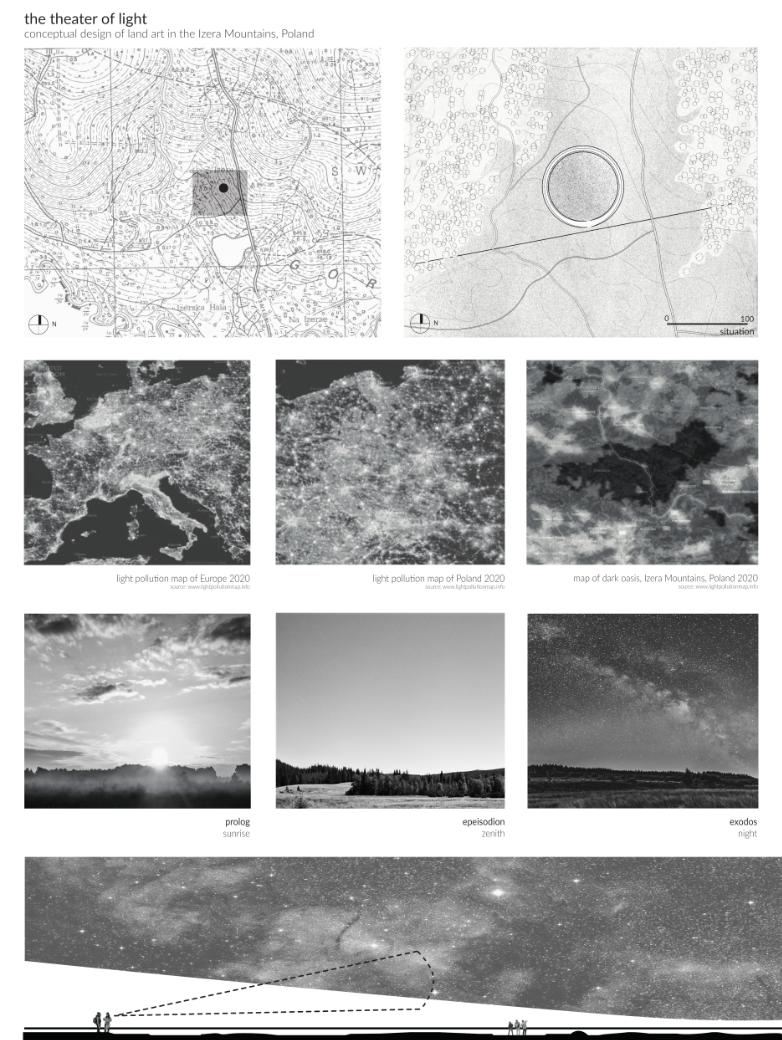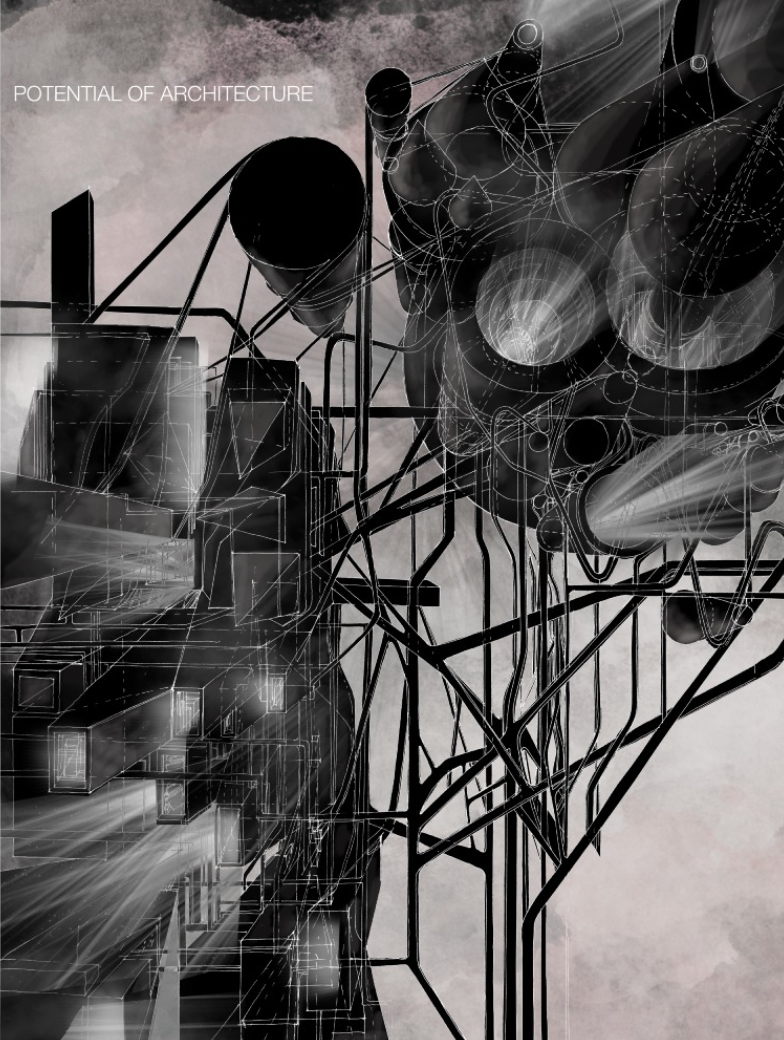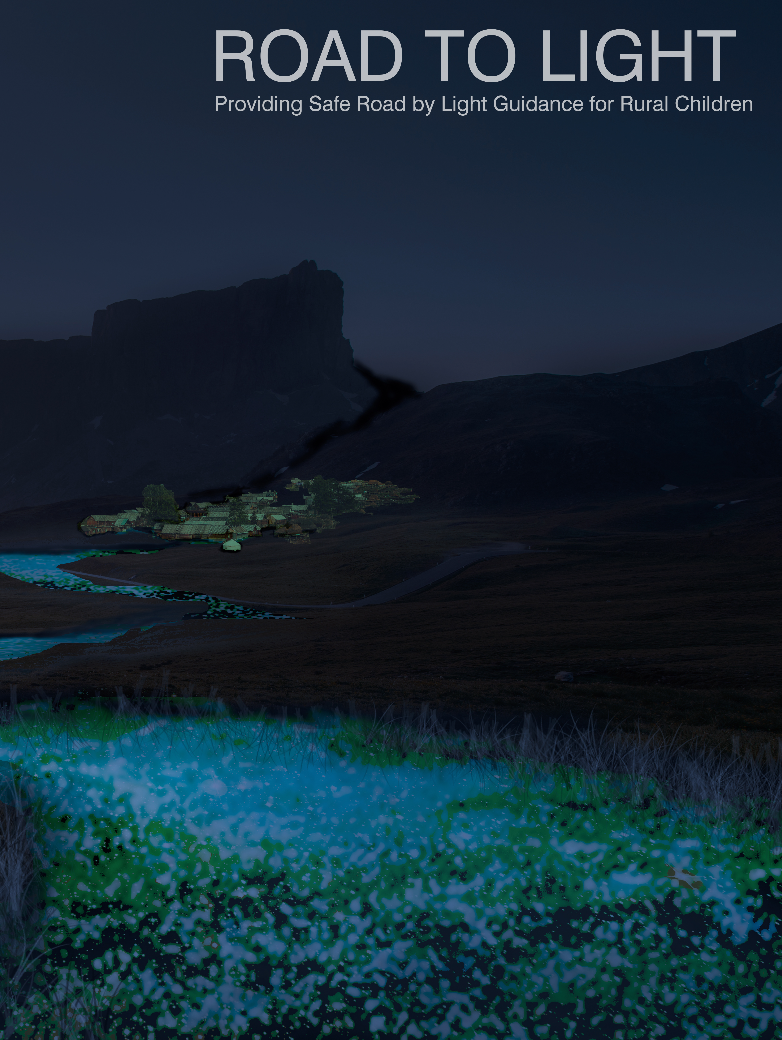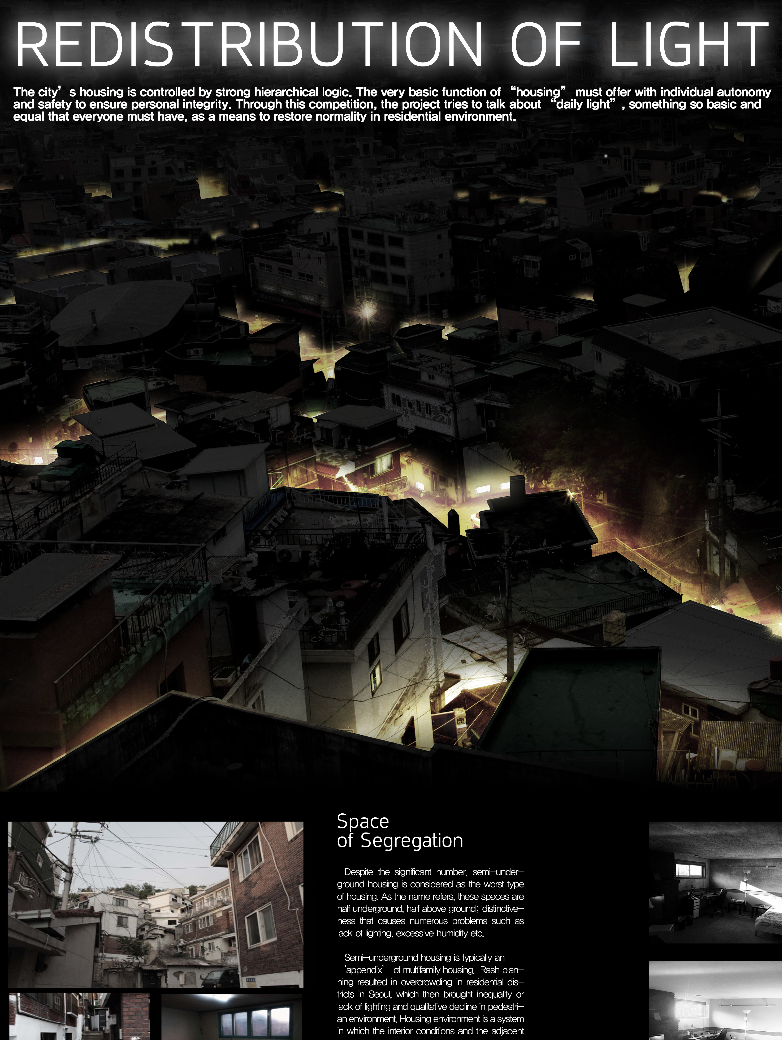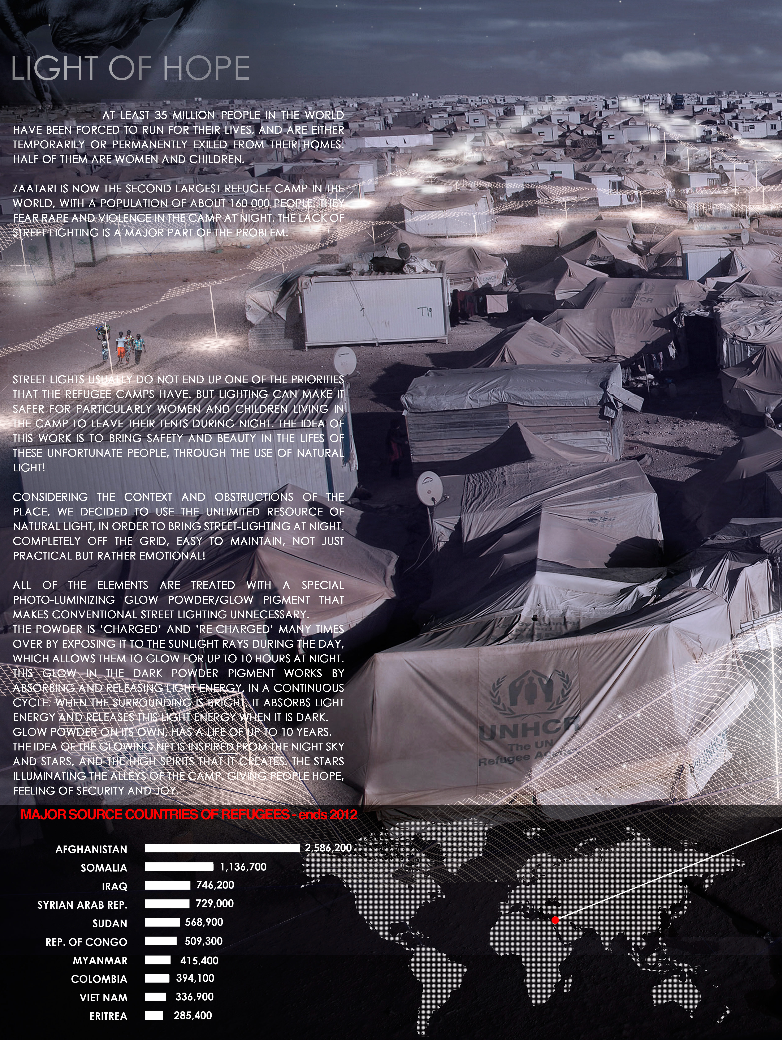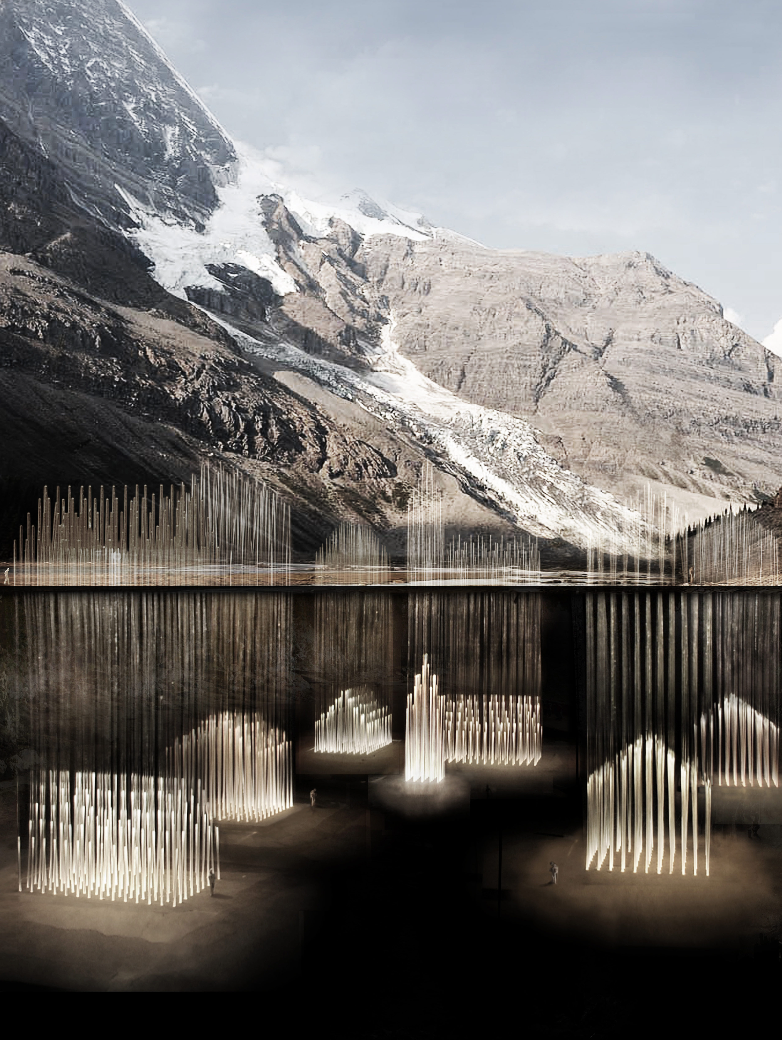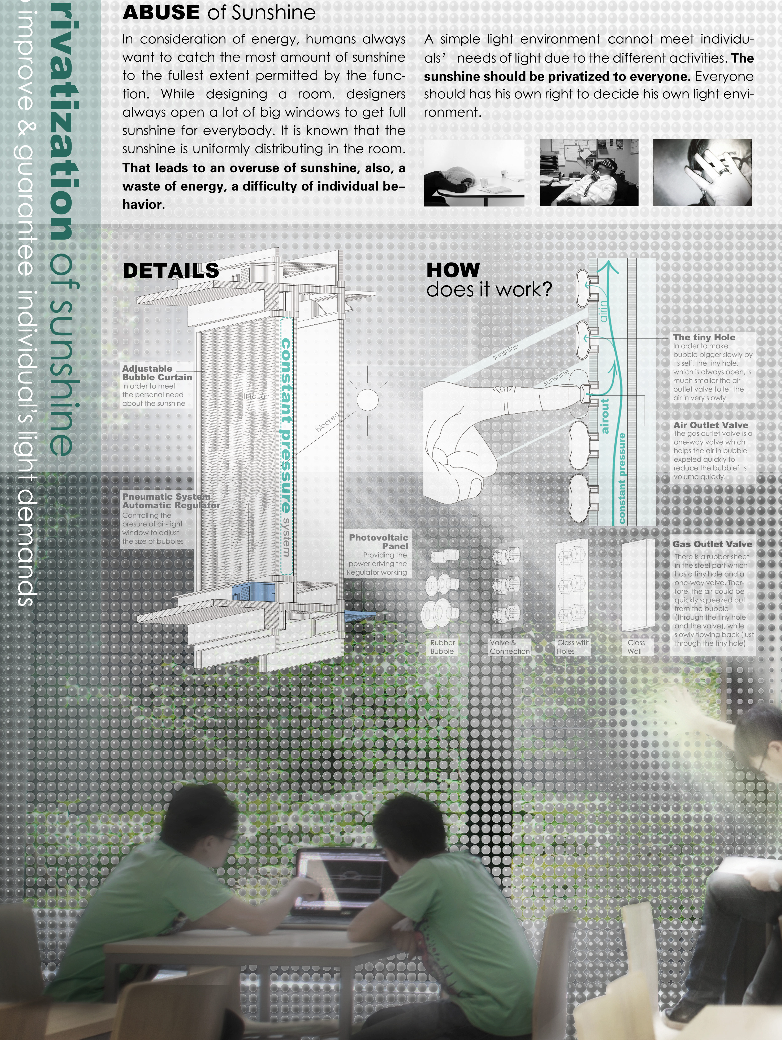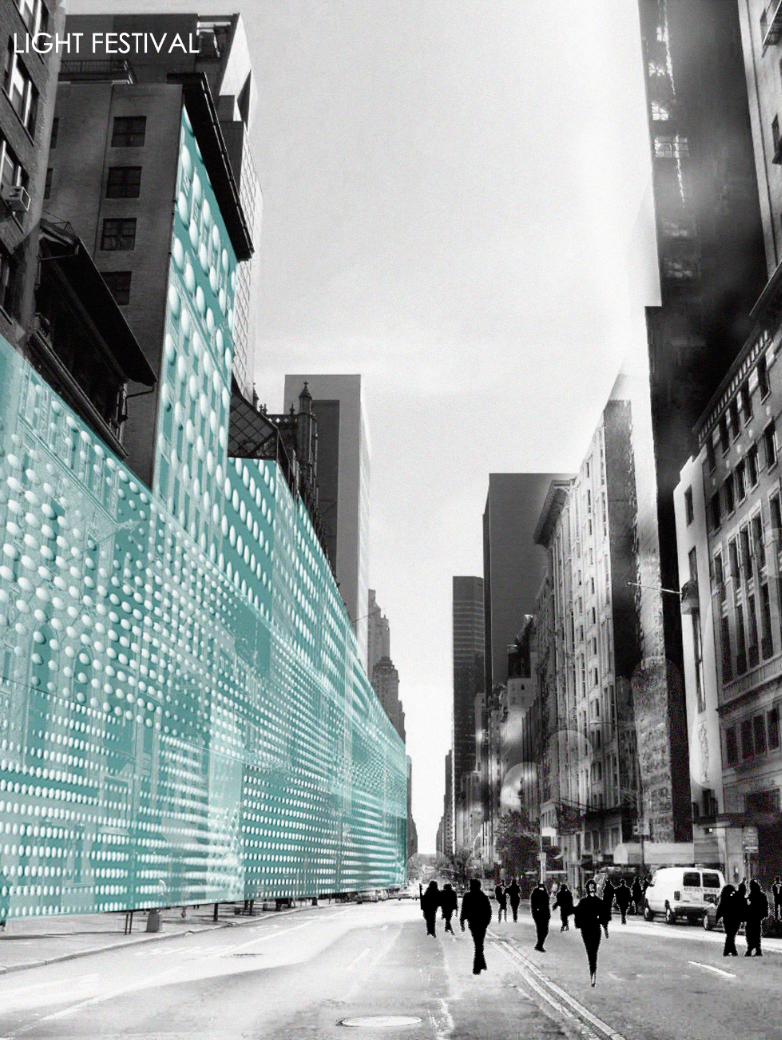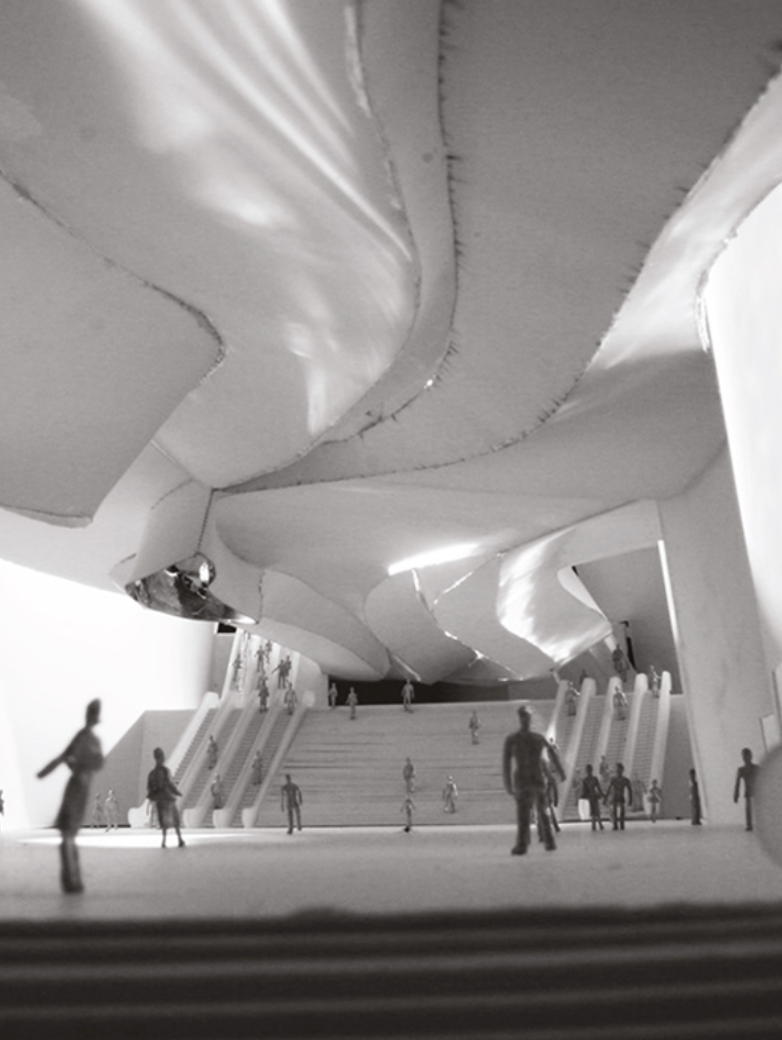2024 - SOLAR MIMOSA

Category
Daylight in Buildings - Region 1: Western Europe
Students
Agnes Wing Shan Yeung
Teacher
David Garcia
School
Royal Danish Academy
Country
Denmark
Download
Download project board
A dynamic, performative, and aesthetically pleasing solution to enhance walkability and improve thermal comfort in Al Ain’s hot arid climate. A passive self-shading system using adaptive materials that respond to solar radiation and ambient temperature changes, eliminating the need for any mechanical control systems.
Background
Al Ain, a city in the United Arab Emirates (UAE), experiences a hot arid climate with daytime temperatures regularly exceeding 40 degrees Celsius. This intense heat causes thermal and visual discomfort in both indoor and outdoor environments. Shading, therefore, emerges as a crucial element in addressing climate challenges.
The urban environment of Al Ain reveals a notable absence of pedestrians on the streets due to the intense sun and insufficient shading in pedestrian walkways. Simultaneously, modern buildings combat solar heat with energy-intensive systems, such as air conditioners and Low-E tinted glass windows, raising environmental and economic concerns.
Design Idea
Despite projects like Al Bahar Towers and Hazza Bin Zayed Stadium incorporating adaptive sun-shading facades, they present challenges such as high maintenance costs and complex controls. Balancing environmental and economic concerns, the region seeks sustainable solutions to address pressing climate challenges.
This project explores the use of thermal active composites to create a self-shading system for enhancing walkability and thermal comfort in regions with hot and arid climates. These composites, formed from alloys with differing coefficients of thermal expansion (CTE), elastically deform in response to solar radiation and ambient temperature changes, making them a dynamic, performative, and passive solution.
Through multiple material tests, emphasizing ease of fabrication and enhanced deflection performance, the prototype employs a combination of copper foil contact paper (active layer) and recycled paper (passive layer). The design includes fin structures for shading against low-angled sun and street canopies for midday protection. The composite strips deflect in response to temperature changes, dynamically altering the angles of the array to close gaps, provide variable shading, and create captivating light patterns.
Artistic Intention
The undulating form mimics the organic contours of desert sand dunes. Upon deflection, it creates an ever-changing interplay of light and shadows reminiscent of date palm tree leaves, a species deeply embedded in Al Ain’s cultural heritage. This enhances both the visual and functional aspects of the system, fostering a connection with the local community.
While numerous shading devices are effective, what sets this prototype apart is its environmental responsiveness and dynamic curling, which enhances sensory experiences by emphasizing light, atmosphere, and touch, fostering a deeper architectural connection.
Phenomenology
Understanding how people interact with and perceive this adaptive dynamic system, which responds to changing solar radiation and temperature, will provide valuable insights into its impact on comfort and engagement within the built environment and its potential application to buildings.
Performance & Application in Architecture
This adaptive behavior effectively blocks excessive sunlight entry, providing variable shading and creating a cooler microclimate. When effectively applied in architectural designs, the system shows potential to offer a deflection feature that provides ventilation and ensures thermal comfort for users. Additionally, the open-close shading mechanism enables flexible space transformation, allowing areas to seamlessly adapt between private and public uses.
